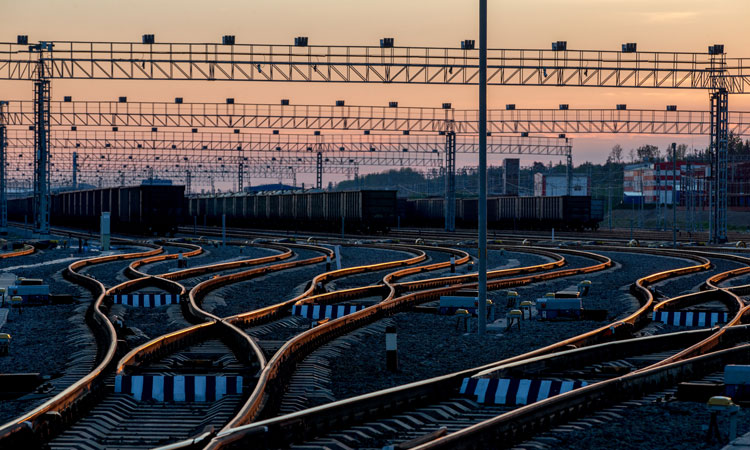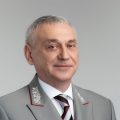The development and use of digital twins for the maintenance and repair of railway infrastructure
Posted: 16 July 2021 | Gennady Verkhovykh | No comments yet
Gennady Verkhovykh, Deputy Managing Director and Head of the Central Directorate Infrastructure of Russian Railways (RZD), explains why the development of digital twins is one of the main priorities for RZD’s digital transformation.


A digital twin is a digital copy of a physical object or process that is used to help to optimise its performance.
A system digital twin includes an electronic model that reacts to external and internal stimuli. The use of digital twins can significantly save a company money and time. Before making structural and technical changes to a physical system, they can be studied on a digital twin to determine their suitability.
The single enterprise platform for designing and maintaining technical documentation (SEP TD) that RZD uses, and which is constantly improving, serves as the basis for the digital twin of RZD infrastructure. The primary source of information in the creation of a digital twin is the working and design documentation, the management of which is incorporated in the SEP TD.
Digital twin technology makes it possible for RZD to effectively use its resources to maintain its railway infrastructure. Digital twinning its infrastructure is one of the most important steps in digital transformation. The digital transformation strategy of RZD defines the conceptual foundations and principles for transforming its activities in the digital economy, as well as the main elements of managing this process. Transforming its activities is necessary to achieve the goals and fulfil the plan of RZD’s long-term development programme by 2025 and beyond.
Maintaining and managing RZD infrastructure
Due to the development of high-speed and higher speed traffic in our country and the increase in traffic, as well as the need to optimise the way RZD works, it is necessary to accelerate the development of railway infrastructure. The cycle of introducing new technologies and technical means contains many stages, from technical specifications for design and development to commissioning. There is a lot of technical documentation at all stages of design and development: drawings, diagrams and plans. One of the most important tasks is to find out how new technologies impact how infrastructure performs.
When new technical solutions are introduced into the Russian railway infrastructure, various conflicts arise during their operation for the following reasons:
- Inconsistencies between the state of the infrastructure and the design solutions
- A lack of consideration of external factors in the operation of the infrastructure
- New technical solutions that were developed without considering other types of work being carried out at the same facility.
Despite the measures taken to improve the quality of technical solutions, a significant number of errors are revealed upon closer look, and eliminating them during construction, installation and commissioning, not to mention during implementation and operation, is very expensive.
RZD infrastructure includes stations, spans and mobile units. Components of these objects include:
- Automation and telemechanics equipment (traffic lights, track circuits, electric drives, etc.)
- Elements of track equipment (upper/lower track structure, artificial structures, etc.)
- Electrification and power supply facilities (overhead lines, power supply devices, etc.)
- Carriage facilities (maintenance points, technical measurement complexes, etc.)
- Mechanisation facilities (special track machines, etc.)
- Diagnostic and monitoring elements (diagnostic cars, etc.).
RZD’s railway infrastructure digital twin
The goal of RZD’s infrastructure digital twin is to create 3D models of track facilities and structures, automation and telemechanics, electrification and power supply, parts of the passenger complex and moving elements (e.g. different kinds of wagons, locomotives, electric trains and special track machines) on the basis of design, operation and engineering documentation of real objects and their elements, which must be stored in the SEP TD.
Digitally twinning infrastructure facilities makes it possible to simulate the operation of a RZD infrastructure facility using data from related industrial and information systems.
Having constantly updated diagnostic information about the assets of the railway infrastructure makes it possible to identify unreliable elements and plan for their replacement and the repair and maintenance of infrastructure facilities.
A digital twin makes it possible to assess the impact of changes in requirements, usage scenarios, environmental conditions and other variables affecting the operability of RZD infrastructure.
Simulation has become an integral part of implementing any object, allowing one to significantly improve product performance, reduce development costs and bring the product to market faster. The technologies that form the basis of the Internet of Things (IoT) are already making it possible to take the next step: combine digital models with products that exist and work in the real world.
Simulating new products has already helped many companies significantly improve product performance, reduce development and manufacturing costs and bring products to market faster.










